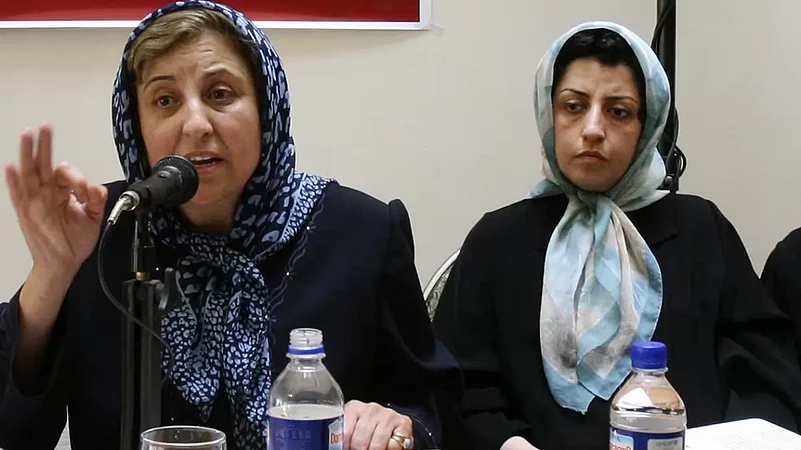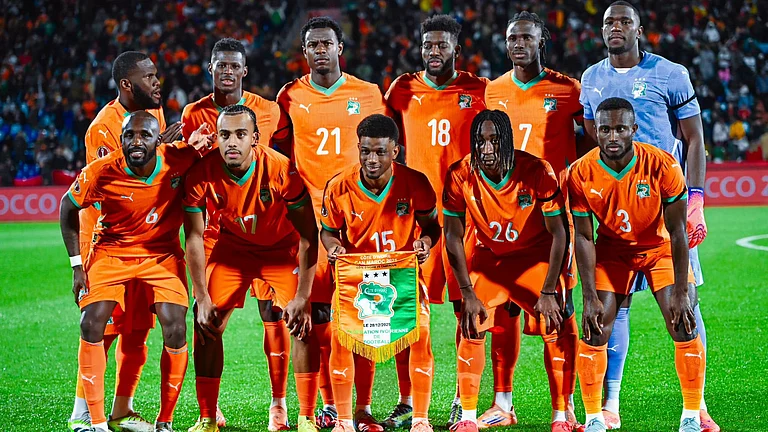“The more of us they lock up, the stronger we become,” Iranian women’s rights activist Narges Mohammadi said in an article published in the New York Times on the one-year anniversary of Mahsa Amini’s killing. She was awarded the Nobel Peace Prize for 2023 for her fight against the oppression of women in Iran and her fight to promote human rights and freedom for all.
The regime has arrested her 13 times, convicted her five times, and sentenced her to a total of 31 years in prison and 154 lashes. She is still in prison and yet has continued to tirelessly campaign for the abolition of the death penalty in Iran, which has one of the highest execution rates in the world.
For nearly all of Mohammadi's life, Iran has been governed by a Shiite theocracy headed by the country's supreme leader. While women hold jobs, academic positions and even government appointments, their lives are tightly controlled. Laws require all women to at least wear a headscarf, or hijab, to cover their hair as a sign of piety. Iran and neighbouring Afghanistan remain the only countries that mandate it.
Mohammadi was put behind bars for protesting over the death of 22-year-old Mahsa Amini in police custody. Amini too rallied against the compulsory hijab that Iranian women have been forced to wear by the Islamic Republic for more than four decades. Her death sparked one of the most intense challenges ever to Iran's theocracy. It was then, from behind bars, Mohammadi contributed an opinion piece for The New York Times, where she said, “What the government may not understand is that the more of us they lock up, the stronger we become.”
Amini's death stirred a revolution in Iranian society which saw nationwide women-led protests. Women took over the streets, tore off their hijabs, and cut their hair publicly in defiance of the Iranian regime. More than 500 people were killed in a heavy security crackdown while over 22,000 others were arrested.
A year after Amini’s death, the Iranian regime has increased its crackdown on dissent and women. The morality police are back on the streets. Just over 24 hours ago, a 16-year-old girl was hospitalized in the country after she entered a subway car with her hair uncovered, and left the same car unconscious.
The regime has also approved a stricter law, under which women could face up to 10 years in jail if they continue to defy the country’s mandatory hijab rules. Ban on internet usage and ban on travel can also be imposed as a form of punishment. Similar to the medieval period where women who were not falling in line with the patriarchal mould were labelled witches, judges in Iran have also started ruling women violating hijab rules as mentally-ill.
With the help of intermediaries, Mohammadi was able to send a letter to CNN from inside Tehran’s Evin Prison, before the prize was awarded. In her letter, she emphasised that hijab was not optional and was imposed by the government, not based on beliefs and convictions, but to “submit” citizens to government dictates. “In clearer terms, compliance with mandatory hijab was a way of training submission and surrendering to oppression in society, not through bullets and executions, but through placing a whip on women’s heads and making it normalized…,” she said.
Outlook's April 21, 2023 issue was dedicated to the Iranian women's movement. From the history of the hijab, politics of hair in Iran, to the role of sportspersons and actresses in amplifying the movement and the costs they have paid, the issue looked at how the current regime in Iran is sharpening its assault on women's freedom and agency.
Beyond Iran, Outlook has also looked at the hijab protests in Karnataka where students were forced to remove their headscarves before entering educational institutions. While women in Iran were protesting against the mandatory imposition of hijab, Muslim students in Karnataka were protesting against the ban on hijab in educational institutions. Both protests were demanding that the right to choose whether or not a woman should wear hijab, should rest with the woman.


























